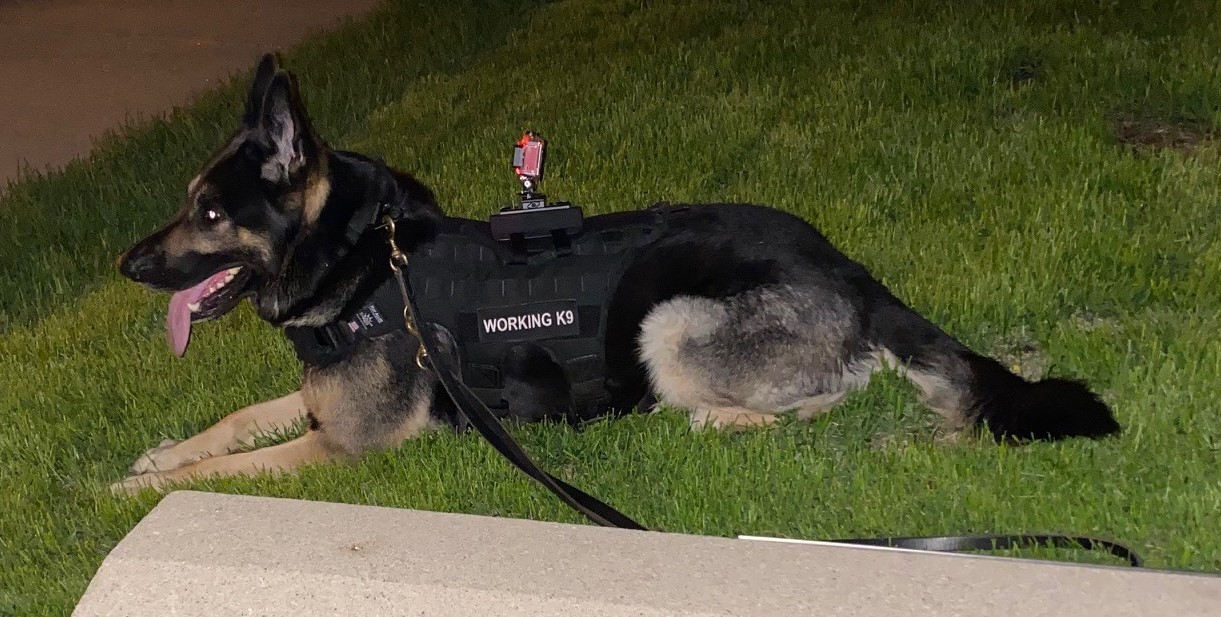
Bill
MemberForum Replies Created
-
Hi Henry. The “emergency” muzzle I use is the Baskerville Ultra. I prefer it for fit, and canine comfort. Proper sizing is crucial. Familiarization went smoothly in small steps and the same for duration. Associating the muzzle with “positives” made it just another piece of equipment. I couldn’t recall the brand name of it – went to get it and my GSD sat for me to put it on. Whatever brand you opt for, proper introduction and reward will make it a non-aversive addition to your equipment should the need ever arise. Kudos for training before the need arises and hoping it never does.
-
Hi Loretta – happy to share how I conditioned my GSD on the same model treadmill as your picture shows. After my research a couple years ago I learned a few things that helped us and perhaps something may be the piece you are looking for as all dogs are different;
1.) Ensure the treadmill is not facing directly into a wall. As unnatural, at first, as it is for the dog to be on a moving surface, it is equally unnatural to run into a wall.2.) Once conditioned/familiar with the treadmill itself, I did his initial “familiarization” in Mode 1, level platform. While slower, the speed variations help in removing monotony and allows for warm-up and cool-down periods. It allows time to coach/coax the dog to stay towards the front of the treadmill as I never used a lead or anything with the treadmill. With the safety “stop” lanyard attached to a loose collar, my dog made the connection that if he lags too far back on the treadmill, it stops immediately. Likewise, it helped in his initial learning to keep the provided “sides” in place on the treadmill to assist with centering on the treadmill.
3.) My dog is ball driven. Keeping the “prize” in sight helped at first. Once the exercise session is finished, he waits on the stopped treadmill until released – then rewarded.
In my quest to learn how to keep him moving, I read a suggestion someplace that said to encourage the dog to stay in motion, rub/scratch between their front legs as they are exercising. It worked! I gradually transitioned to the rubs/scratches to encourage him to position more forward on the treadmill. Now, all I say anywhere in the house is “Treadmill” and he runs to it and waits for me to attach the safety stop lanyard and he exercises. I stay at the head of the treadmill at all times.
To be sure, this was not a quick process. I would estimate it took a good couple months and the incremental increases were very small. I believe as important as it is that the dog knows how to exercise safely on the treadmill at appropriate times/intervals – it is imperative that the dog know how to stop it themselves. I placed an arrow in the picture pointing to the safety stop lanyard as it is hard to see – but it is there. I can’t imagine being forced to run when I don’t want to or something hurts – knowing how to shut the treadmill off empowers the dog to stop it and safely dismount. Once the treadmill was stopped by the safety lanyard, I opted to never reattach the emergency stop and go again that day. My thought was that in so doing, my dog would eventually make the connection that he was in control of the movement, and/or if you fall too far back on the treadmill, it stops for the day. If he wants to travel, he has to stay centered.
I would be remiss not to mention that the treadmill is an addition to, and not a replacement for, our daily training sessions and structured pack walks. When there is ice on the sidewalks, or its too hot and humid, we still have a temperature controlled environment in which to get his need for significant movement met.
-
Hi Simone,
1. Congratulations – Watson will surely bring years of joy.
2. Kudos to you as a new owner for being responsible and reaching out for some hints, tips, tricks, etc.
I echo Riggan’s observations and comments. As you are now the pack leader, Watson is relying on you to care for, set direction, and protect “the pack”. Like Riggan, I too am an owner that does not want dogs approaching. As I monitor my K9’s responses when other dogs are approaching, I note very different reactions when he sees dogs off leash or he sees dog’s walking their owner/handler. If the other dog is on leash and responding to its pack leader – its a quick glance and he moves on. Whenever I am asked, I politely decline invitations from strangers for dogs to meet without exception. I restrict these meetings/play times when it is with people I know and dogs I trust and with whom we have had a proper greeting/meeting. I do not want my K9 to have an arbitrary meeting be the start of a reactivity issue. Dogs are likely to tend towards reactivity, the lunging, barking, etc., when they are on leash as their fight/flight instincts are impeded as there is no option for flight, that only leaves fight. Compounding the issue is if one dog is off leash and the other dog is on leash. Exacerbating the circumstances these meetings are usually head-on. When dogs are initially meeting they approach from the side/flank. This allows either dog to “flight”. When the other dog is on a leash – there is no option for flight, which leaves one option.
All the best as you and Watson grow and thrive together. He is lucky to have a committed owner like you.


